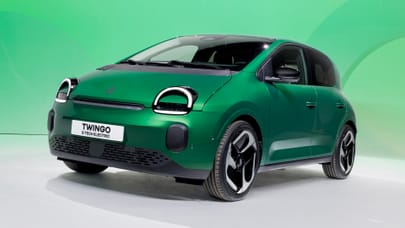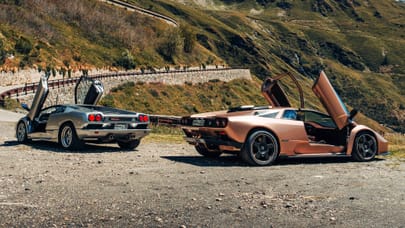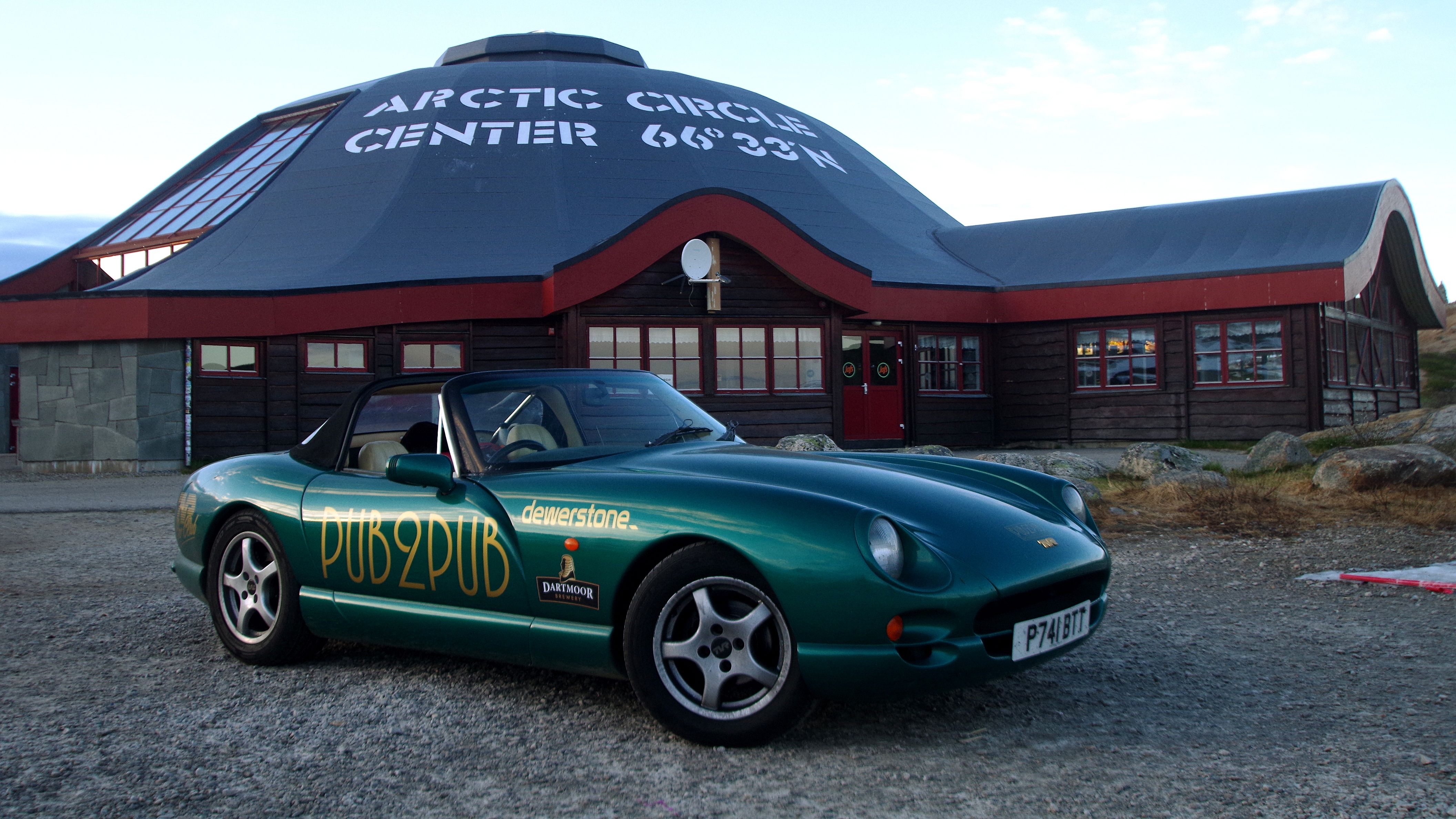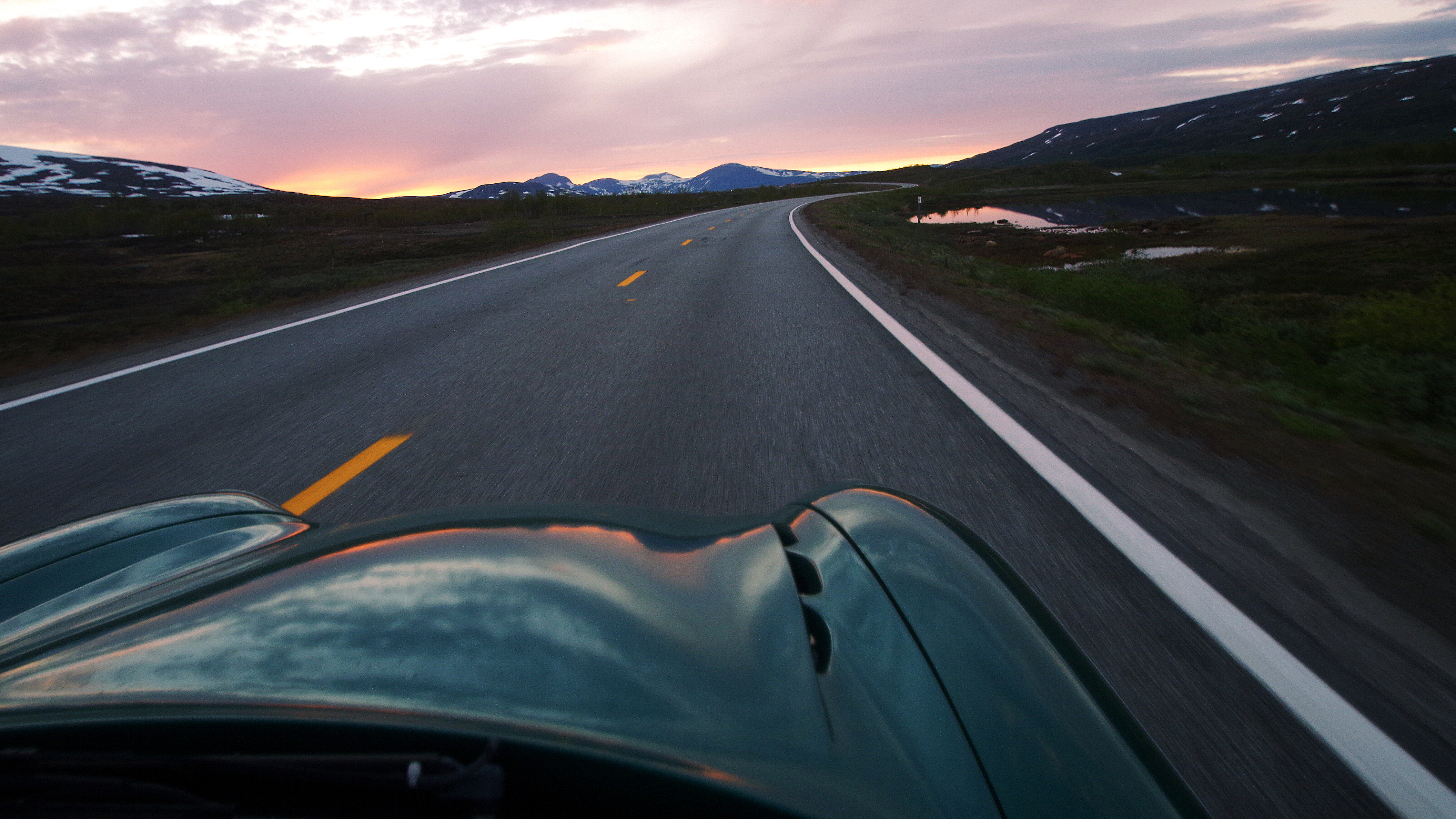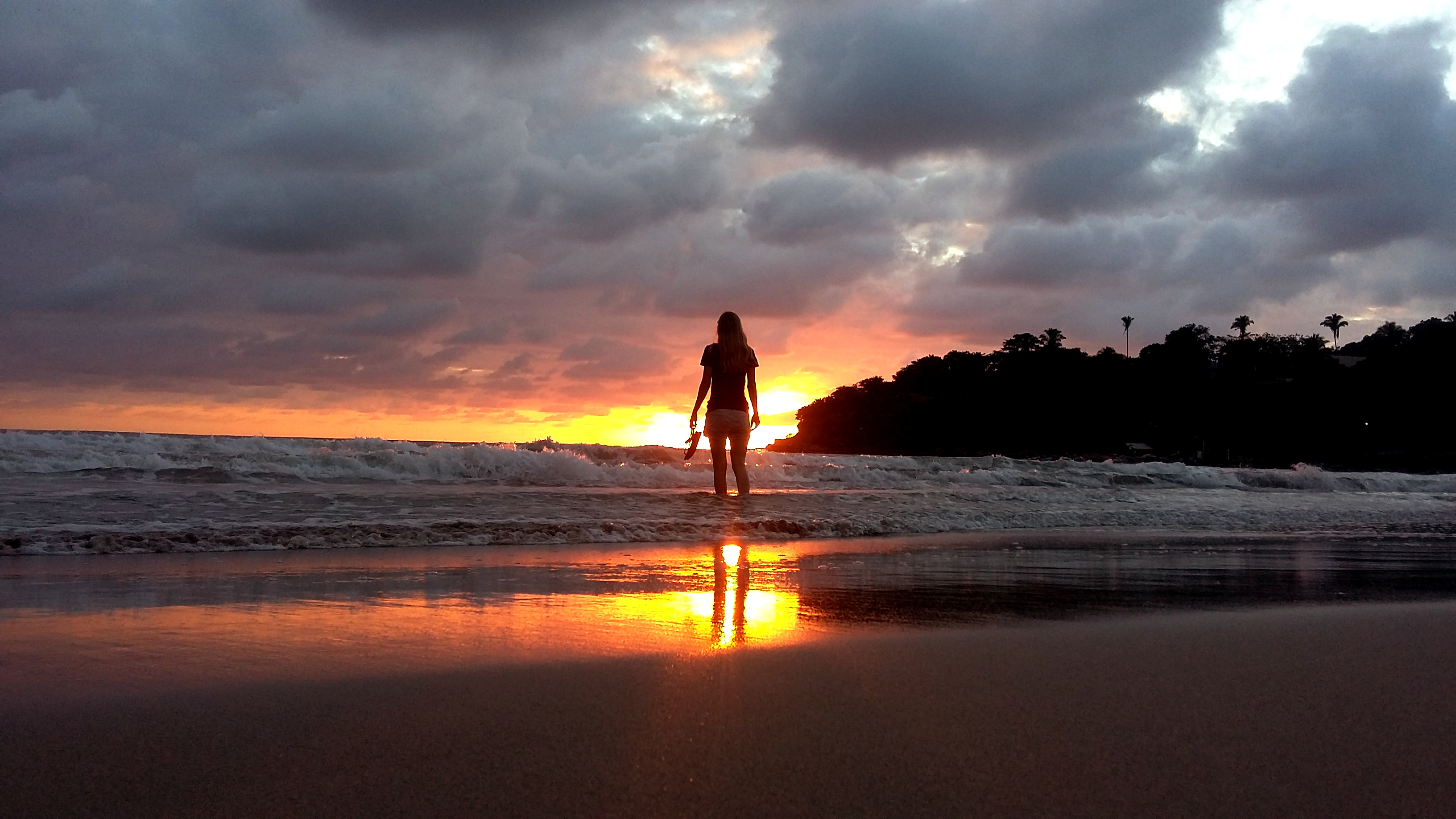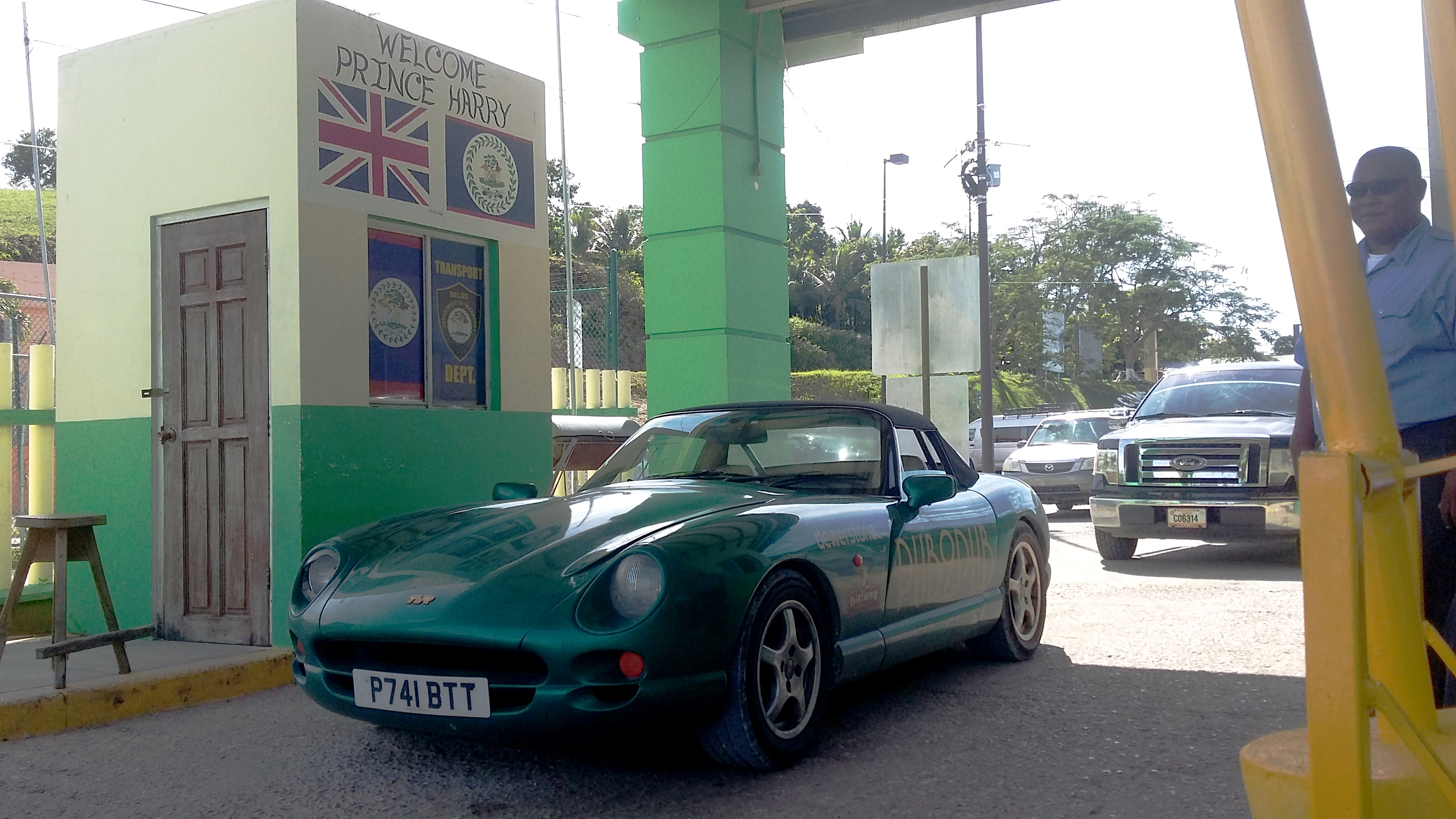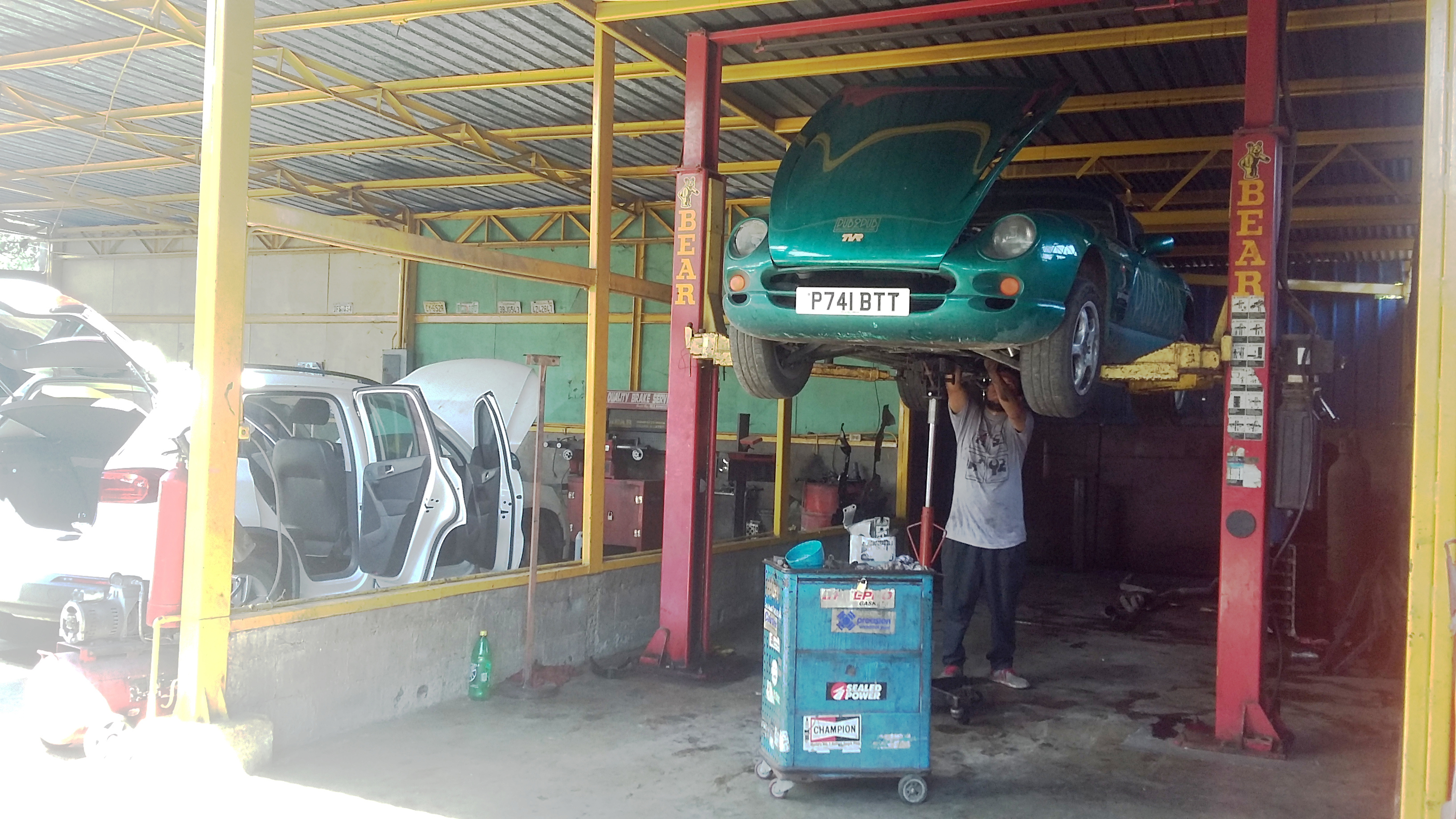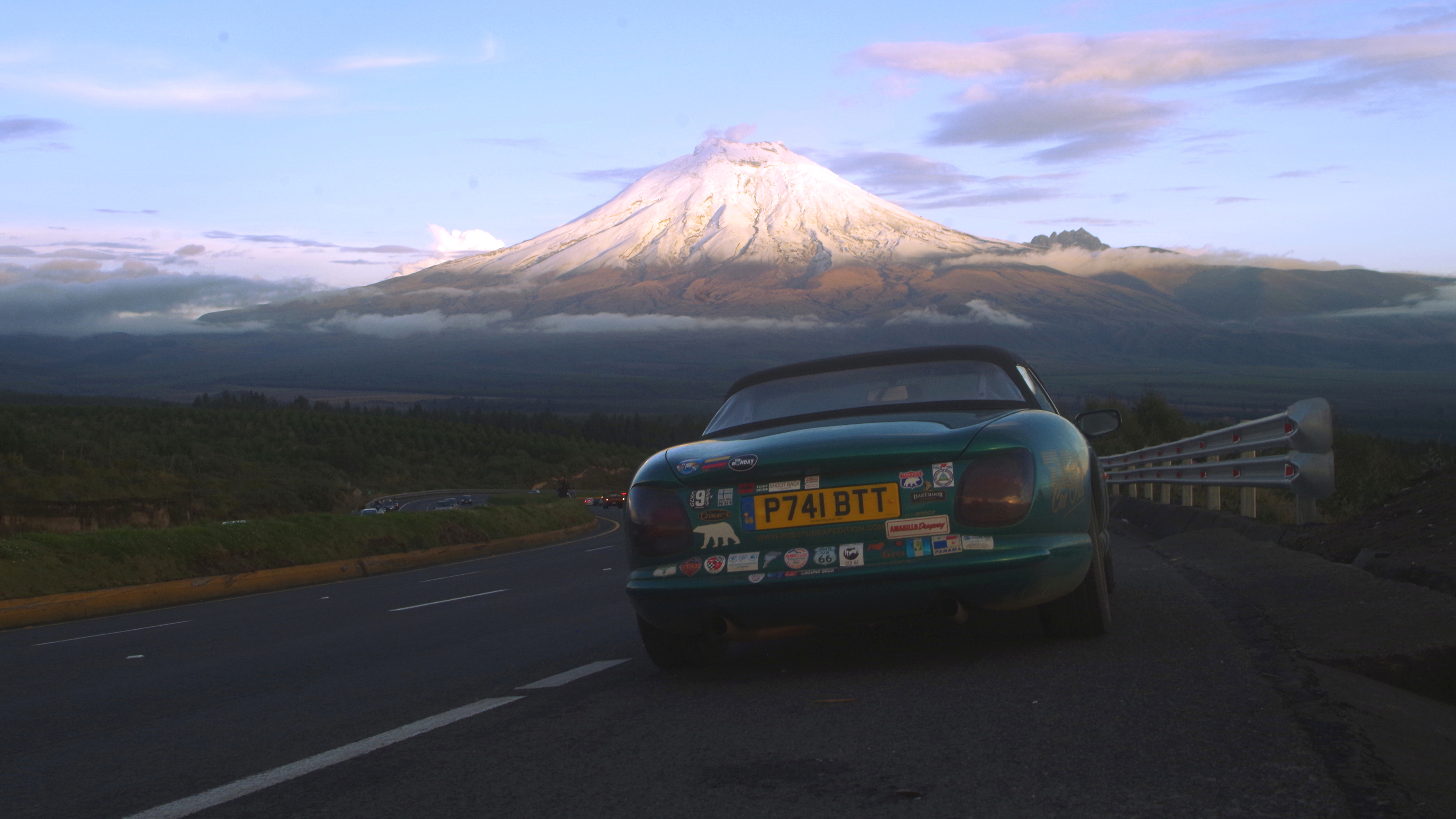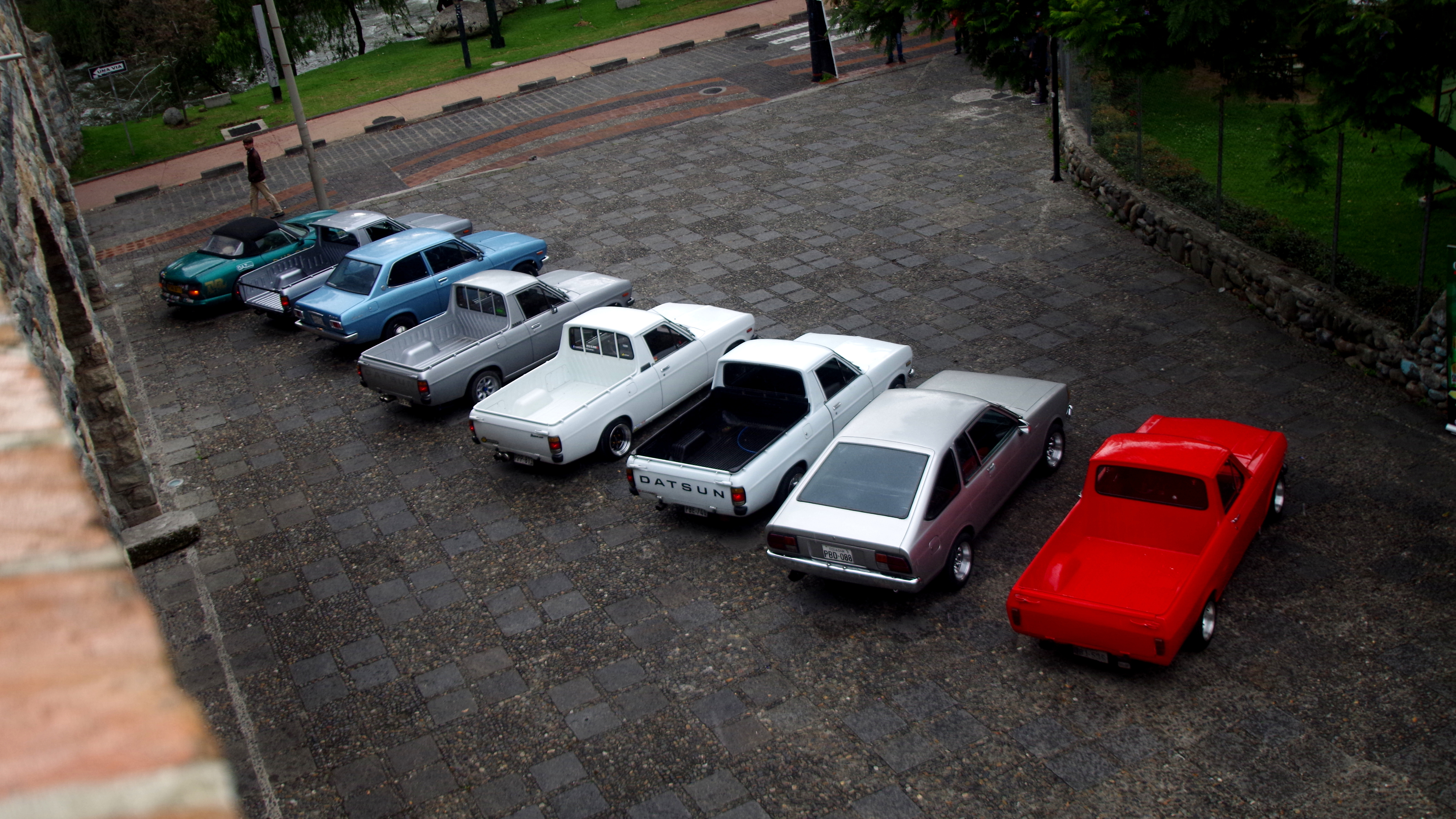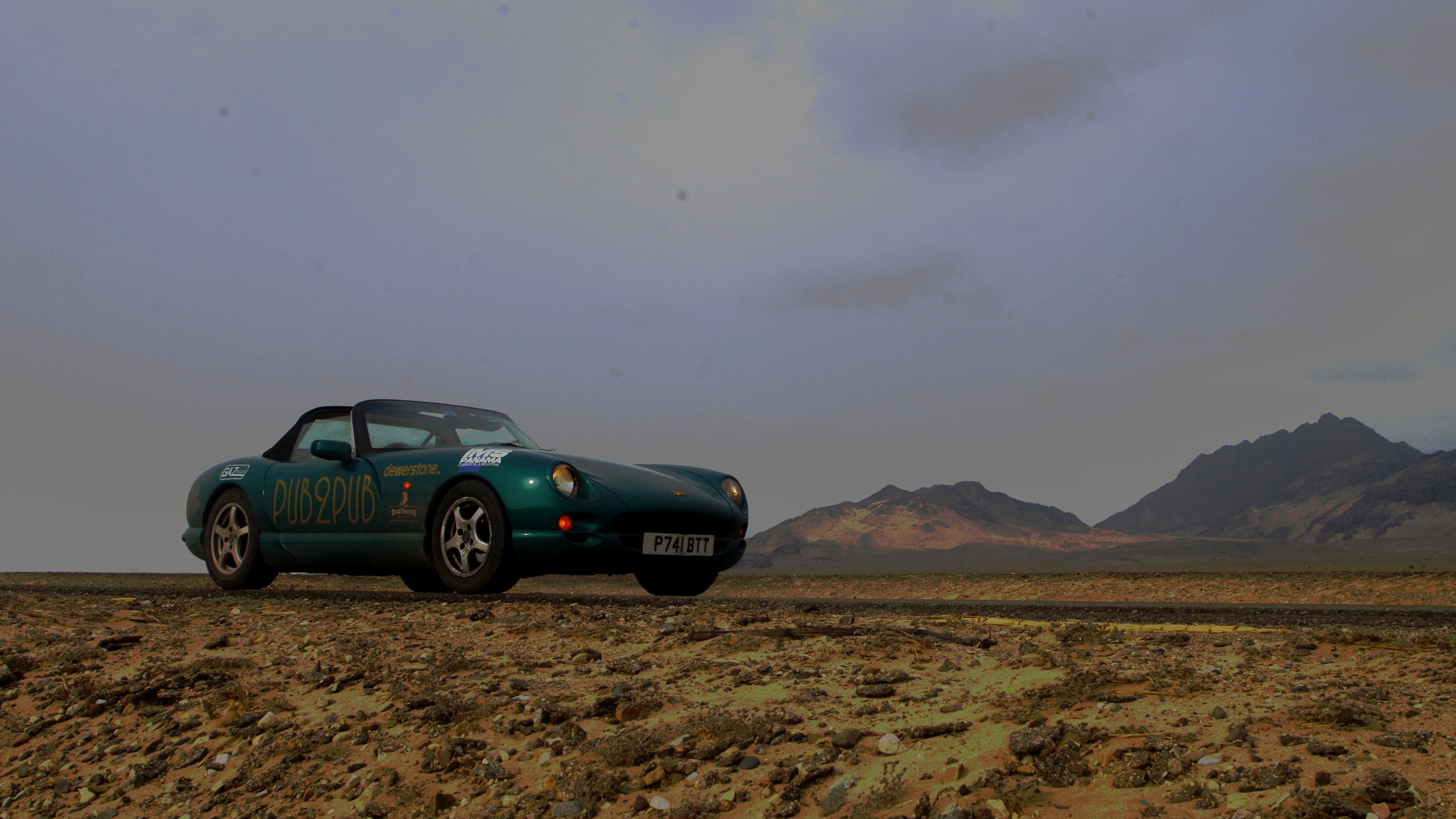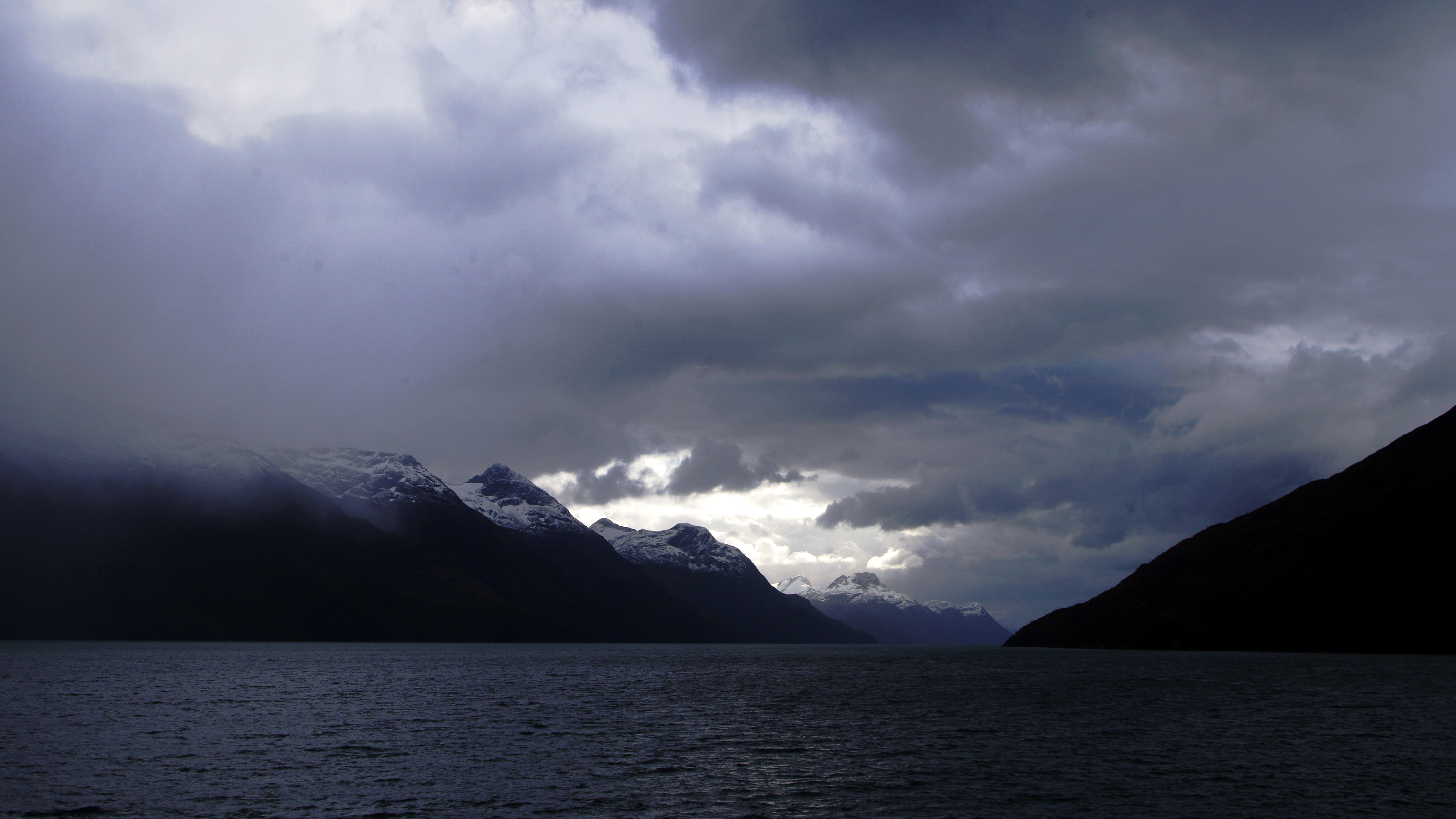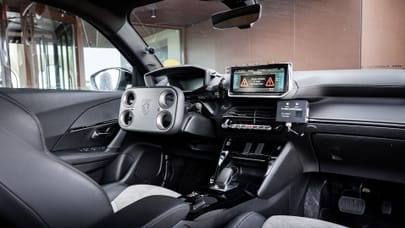
Here's the story of a 20,000 mile road-trip in a TVR
From the northernmost pub on earth to the southernmost, in an old Chimaera
Many of the world’s truly great ideas are found at the bottom of an empty pint glass. Often, the idea is quickly lost in the blurred haze of the evening. Sometimes, the idea survives through to the next day, only to fall victim to the harsh reality that is sobriety. But occasionally, just occasionally, a suggestion so gloriously ridiculous comes along, that it simply has to be made a reality.
Yep, Pub2Pub was one of those ideas.
I mean, why wouldn’t you want to attempt a road trip from the northernmost pub on the planet, to the southernmost?
Words: Ben Coombs
Okay, so you can probably think of a few reasons off the top of your head. According to our calculations, the northernmost licensed premises is in an abandoned Soviet mining settlement on the island of Svalbard, less than 700 miles from the North Pole. And the southernmost? Puerto Williams, in Chilean Tierra del Fuego. Never heard of it? Nope, neither had we. To get between them, we’re talking 20,000 miles of driving, across three continents and 24 countries. Gruelling.
So you’d need a Land Rover for a trip like that, right? Erm, not exactly. Given the eccentrically British nature of the expedition, that would be far too sensible. Only the glorious daftness of undertaking the journey in a twenty year old TVR Chimaera would do.
And so last July, we found ourselves keeping an eye out for polar bears as we downed a beer in the old hotel of Pyramiden, Svalbard, with the TVR waiting for us in northern Norway, having made the 3,000 mile trek there from England the previous week.
Pub2Pub’s first leg involved getting the TVR back to the UK, from where it was all set to be shipped across the Atlantic to New York. And it certainly didn’t disappoint. Arctic Norway is a gorgeous place for a road trip; a glorious explosion of crags and fjords which provided a stirring backdrop as we drove south towards the Arctic Circle. For day after day, our routine was simple – camping at night, rolling south by day, as the TVR showed off its grand touring credentials by proving itself to be a comfortable and effortless, if rather loud, place to rack up the miles.
Miles which took us from Norway, through Sweden, Denmark, northern Europe and back to the UK, where the expedition went transatlantic, with the TVR embarking from Southampton for the new world. New York, where we were reunited with the TVR in early August. And as memorable experiences go, rolling out of the Port in the only Chimaera in the United States, with the Statue of Liberty and Manhattan skyline flashing past the windows, ranks pretty highly.
We dropped into a grassroots Sunday morning drag racing event and ran the quarter mile, proudly logging the slowest time of the day in the process
After checking out Washington and catching the total solar eclipse in Tennessee, the two lane blacktop rumbled to our V8 tune as we struck out west along the I-40, across the dustbowl plains of Arkansas and Oklahoma, to Amarillo. Where we dropped into a grassroots Sunday morning drag racing event and ran the quarter mile, proudly logging the slowest time of the day in the process.
They take their drag racing pretty seriously in the Texas panhandle.
After Texas, the landscape got its game on, morphing into the American West we all know from a thousand movies. And we weren’t afraid to tick a few clichés. Like dropping the top in Monument Valley, cruising down the Vegas strip, or popping up to Rachel, Nevada, tucked away next to Area 51 and home to many an alien conspiracy theory.
Top Gear
Newsletter
Thank you for subscribing to our newsletter. Look out for your regular round-up of news, reviews and offers in your inbox.
Get all the latest news, reviews and exclusives, direct to your inbox.
Death Valley was next. That’s Death Valley in midsummer – all 50°C of it, and hence the toughest test yet for the TVR. However, Blackpool’s finest took the arid, salty landscape in its stride, with no overheating and little in the way of complaints when faced with its first corrugated desert tracks of the trip.
The forest fires of Yosemite were next on the list, and it was an eerie landscape of smoke-eddied silence through which we passed on the way to San Francisco. And then we lived a cliché of California – Porsche 911s on the Big Sur, camping among the Joshua Trees of the desert, and rolling through Beverley Hills with the roof down.
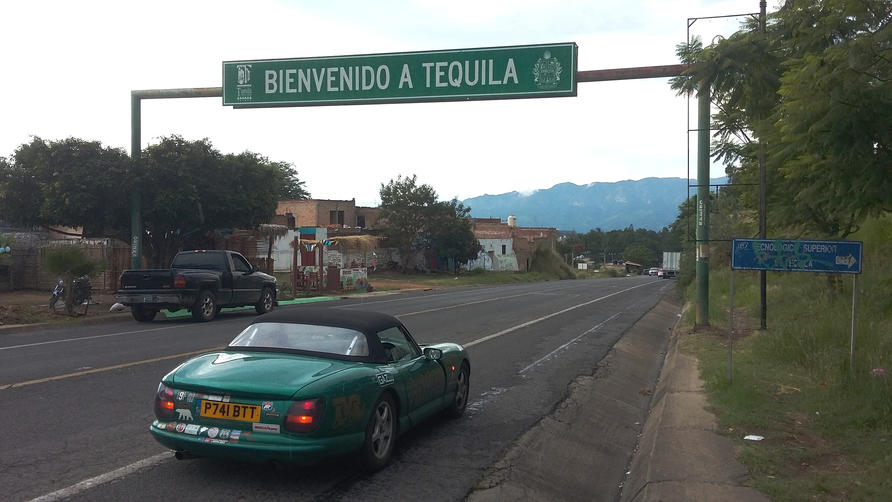
But all the while, as we enjoyed the US, we could feel the jungles of Central America calling; a beckoning which drew us to make fast progress south, to Mexico.
Across the border, the world changed. The traffic became frenzied, kicking up dust between the battered buildings. Police pick-up trucks with machine guns mounted on the roll cage proliferated, and army vehicles occasionally pushed through the melee. And as for us; we suddenly felt rather conspicuous in our shouty little green sports car as we hurried south.
South, to the Pacific beaches around Mazatlan, then on to the Mayan ruins which erupt from the Jungle across Central America. Road conditions deteriorated somewhat, with jagged potholes and mountainous speedbumps becoming the order of the day, while our progress was further slowed by the regularity of the police checkpoints – all of which showed a predictable interest in the little green car from England.
But the progress continued to come. Mexico, Belize and Guatemala were swiftly traversed, before we got the hammer down to make rapid progress across two countries which currently tie for the title of ‘murder capital of the world’ – El Salvador and Honduras.
Costa Rica has a real aversion to right hand drive vehicles - such an aversion, they’re actually banned from the roads there
Nicaragua then greeted us with relative calm, and our pace slowed as we enjoyed the faded colonial splendour of Leon and Granada, the volcano vibes of Ometepe, and the chance to change the TVR’s tired clutch in Managua – the only major job the TVR required while on the road. But this tranquillity proved to be the calm before the storm.
Costa Rica was the next country on our trip down Latin America. And Costa Rica has a real aversion to right hand drive vehicles - such an aversion, they’re actually banned from the roads there. To get around this, we arranged for a truck to take the mighty Chimaera across the country to Panama. However, when the truck arrived, we found it didn’t have the correct paperwork to complete the international transit. And then the situation deteriorated further when Nicaragua refused us re-entry.
For eight days we were stuck between the two borders, trying to find a way to move forwards or back. We looked at the laws which were stranding the car, and the issues which had torpedoed the lorry transit. We spoke to customs, to police, to fixers and friends. And eventually, we found another lorry going in the right direction, loaded the car, completed the paperwork, and rolled into the Costa Rican night.
Panama was next. And as Costa Rica’s customs had complained to Panama about the TVR’s (completely legal) passage, Panama decided it wasn’t going to welcome a right hand drive vehicle either, and refused permission to unload the vehicle. More hours of gridlock followed, more negotiations with aloof customs officers until it was clear that in their eyes, the car was going nowhere. Fortunately however, the expedition had made some Panamanian friends in high places, and we were able secure the TVR’s entry into Panama in the end – it’s amazing how quickly a border opens when the office of the vice president calls up and ‘suggests’ they let the little English car in...
Back on the road for the first time in 11 days, we cruised through verdant countryside to Panama City, a dynamic melting pot of fast business and epic traffic jams. And then, with Colombia beckoning, it was time for continent number three.
Colombia is not a country in which to plan on making quick progress. Located at the northern tip of the Andes, the twisting, vertiginous nature of many of the roads makes them an exercise in patience. Lorries crawl up mile after mile of blind bends, the altitude sucking their performance back to walking pace. On many main roads, 20mph is an acceptable average, while the local’s frenetic overtaking makes road positioning an exercise in self preservation.
But Colombia had its benefits too. From drag racing a horse to exploring the fascinating car scene in Cali, memorable experiences were always just around the corner, aided by some of the nicest people we met all trip. However all things must come to an end, and so we crossed to Ecuador where, as the sun set, we were blown away by the sight of the near-6,000m tall Volcan Cotopaxi soaring into the dusk, and providing one of the most stirring photo opportunities of the trip.
Peru was next, and Peru is big. We’re talking fifty hours driving from border to border, taking in everything from remote costal desert to featureless Altiplano. From the churning streets of Lima to the stacked hairpins above Nazca. But Peru was everything you’d expect from such a big, diverse country, and offered up some of the best driving days of the trip, as its variable tarmac aided our progress to Bolivia, where the ‘Death Road’ awaited us.
Starting at a lung-busting altitude of 4,700m, Bolivia’s legendary Death Road packs a lot into its 40 miles. Think thick jungle, rough gravel, 600m drops, little in the way of guardrails and an average width not much wider than a TVR. But despite rainy conditions, the TVR took the challenge in its stride, continuing its nonchalant, unflappable progress across the map as we drifted south.
And when you’re heading south in Bolivia, all roads lead to one incredible place – the Salar de Uyuni – the legendary salt flats, which cover an area the size of Northern Ireland, and in rainy season, flood to form the world’s largest mirror.
We just had to drive them.
Due to the rains, getting the TVR out onto the salt flats was challenging. A mixture of soft salt and deep channels of water run-off meant that the only other vehicles heading onto the salt were Toyota Land Cruisers. But with care, stress and more than a little trepidation, we got the TVR out there. And what a place. Clouds floated in the watery reflection beneath the car, the horizon disappeared, and the sensation when on the move was one of flying, such was the lack of visual cues. Truly a highlight of the trip.
From Uyuni, we entered the Atacama Desert. The driest desert on earth, this other-worldly landscape of bleached sands and venting volcanoes isn’t a place you’d want to break down. Fortunately, the TVR continued its roaring progress, covering the 1,200 miles to Santiago in four days. And from Santiago, it was a mere 800 mile hop to the gateway to the end of the world - Bariloche, in Argentinean Patagonia.
The TVR’s final few hundred miles south took it across primeval grasslands and along the stirringly named ‘Ruta del fin de Mundo’ – the road to the end of the world
Bariloche nestles in the heart of Argentina’s Lake District, and everything about the landscape it watches over is stunning. Perfect road trip country. And the perfect place to lose yourself, for the distances are vast. Driving hundreds of miles without so much as a petrol station became the order of the day, as the landscape around morphed between mountains and plains, yet always retained its beauty. The glittering peaks of Fitzroy and Cerro Torre scrolled past the TVR’s windscreen, then the Perito Moreno Glacier dazzled us as tower-block sized blocks of ice calved from its advancing face into the waters below.
The TVR’s final few hundred miles south took it across primeval grasslands and along the stirringly named ‘Ruta del fin de Mundo’ – the road to the end of the world. Its wheels stopped turning in Punta Arenas, because to get to the southernmost bar, we didn’t need roads. Instead, we boarded a ship which took us down the Strait of Magellan and along the Drake Passage to Puerto Williams, where the last beer on earth was waiting.
And as we drank it, we looked back on what we’d achieved. Over 23,000 miles across 25 countries, negotiating mountains, metropolises, salt flats and deserts, all in a car whose comfort zone shouldn’t have extended much beyond a gentle Sunday drove to the pub. But against the odds, it did it.
Who says TVRs are unreliable?





